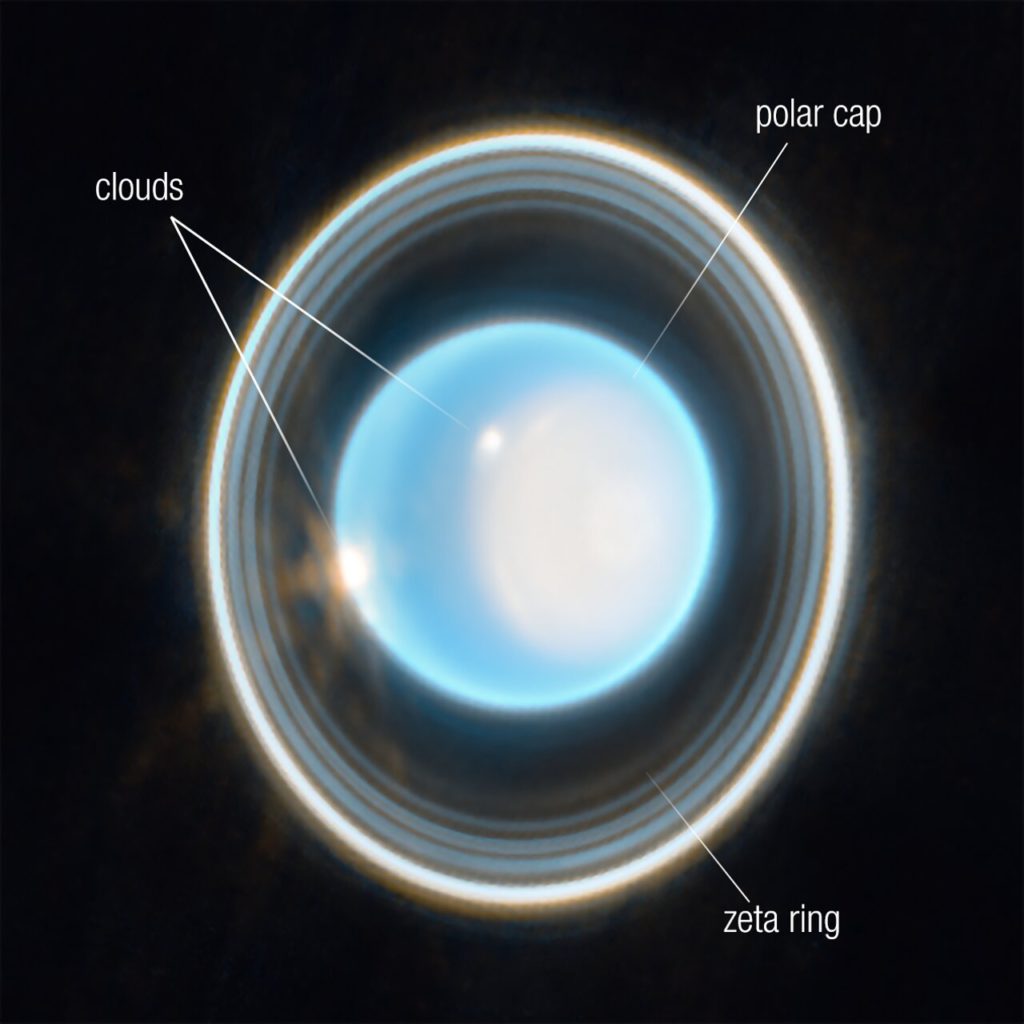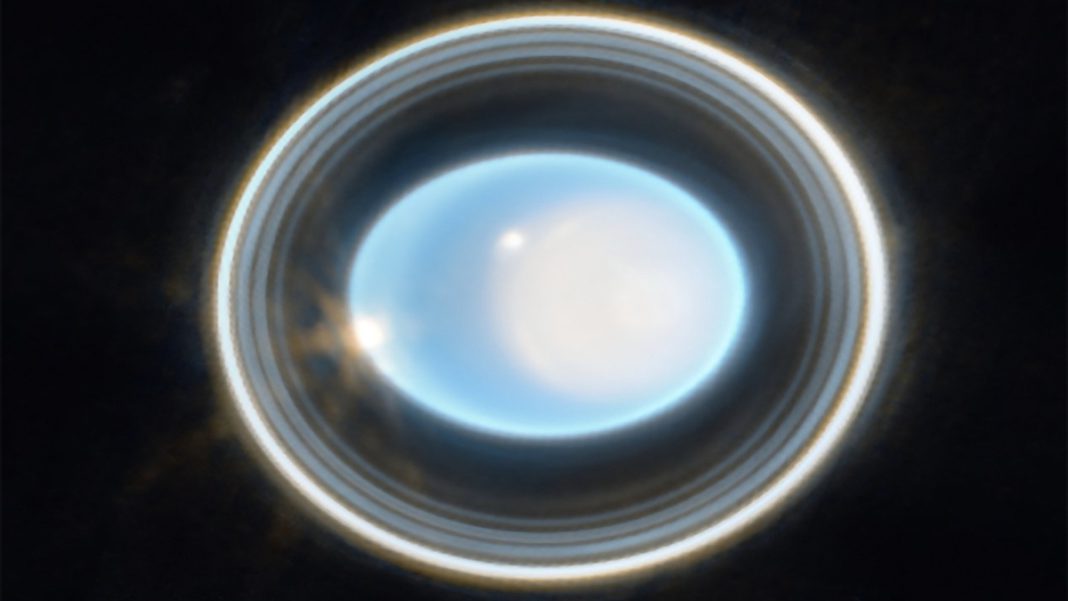UNITED STATES: The James Webb Space Telescope has recently focused its infrared lens on Uranus, resulting in an incredible image of the planet’s ring system and six of its known 27 moons.
Webb unveils stunning pics of Uranus’ ring system
The data collected by the telescope has allowed astronomers to observe the faintest rings in the Uranus system, which were previously only observed by the Voyager 2 spacecraft and the Keck Observatory.
Due to Uranus’ unique positioning, we can observe a “top view” of its ring system as it is tilted nearly 90 degrees to its side, unlike Saturn’s ring system, which is observed on its side from Earth. Although the cause of Uranus’ extreme tilt remains unknown, scientists believe that a collision with a massive object may have caused it during the early history of the Solar System.

The ice-giant planet has an incredibly long year, as it takes Uranus 84 Earth years to complete one orbit. Its tilt also causes extreme seasonal changes, with the poles exposed to many years of continuous sunlight, followed by many years of total darkness.
Voyager 2 observed Uranus as an almost featureless blue orb at optical frequencies. However, the infrared capabilities of the James Webb Space Telescope have revealed dynamic processes within the planet’s atmosphere. The telescope captured a brightening of the polar region that faces the sun, known as a polar cap, which is unique to Uranus.
Further observations revealed an enhanced brightening at the center of the polar cap and fainter features that are only visible during the summer months. On the left limb of the planet, a second bright region was observed, which astronomers believe is likely a large cloud connected to storm activity.
While the telescope could only capture six of Uranus’ 27 known moons in the 12 minutes, it observed the planet. Additional images are anticipated as the James Webb Space Telescope continues to observe Uranus.
In conclusion, the recent observation of Uranus by the James Webb Space Telescope has provided astronomers with valuable data regarding the planet’s ring system and atmosphere.
With its incredible infrared capabilities, the telescope has revealed previously unknown features of the planet, such as the polar cap and the fainter features around it that only appear during summer. These observations will allow scientists to better understand the unique and mysterious ice-giant planet, Uranus.
Also Read: NASA’s Webb Discovers Young Planet with Unique Features Orbiting Two Stars



